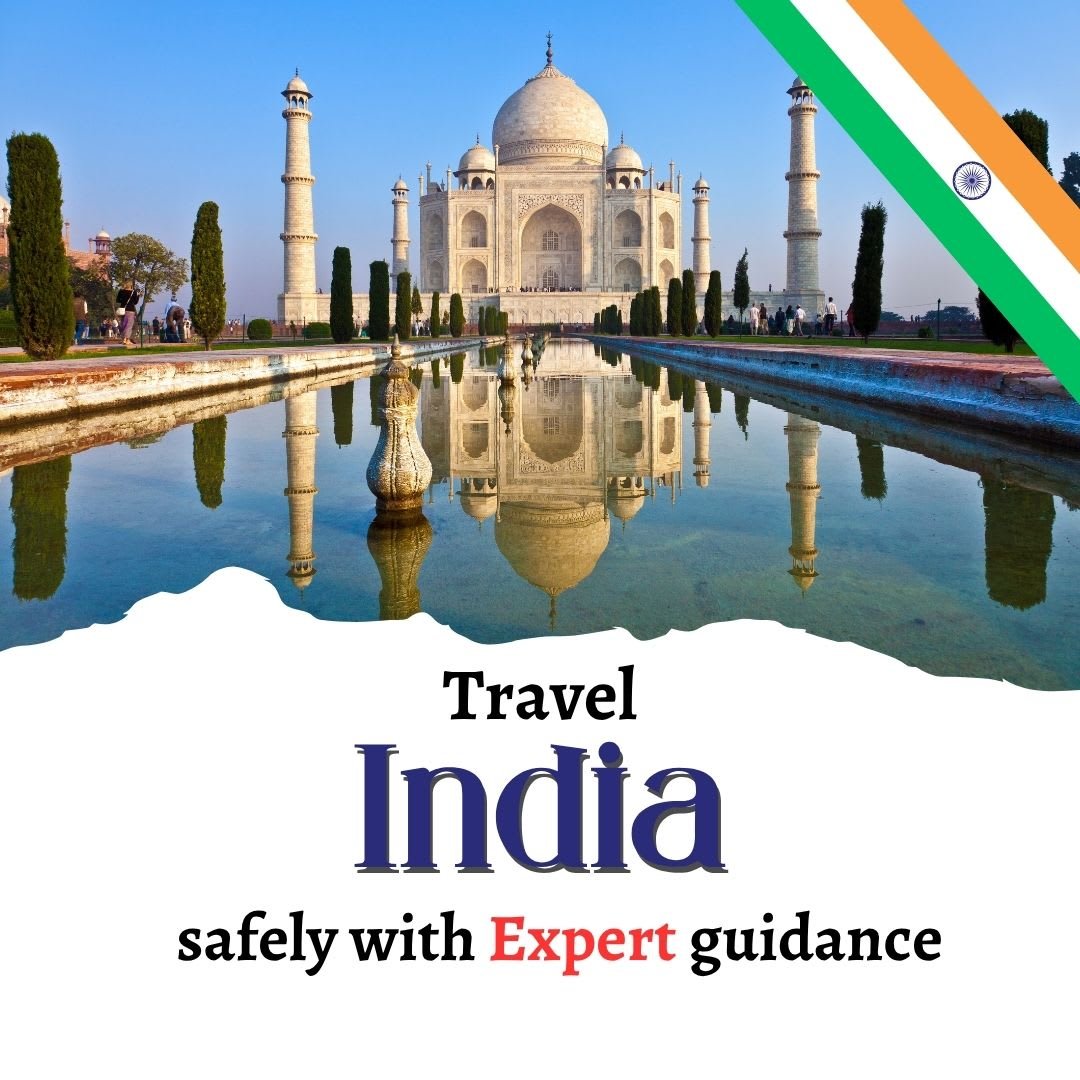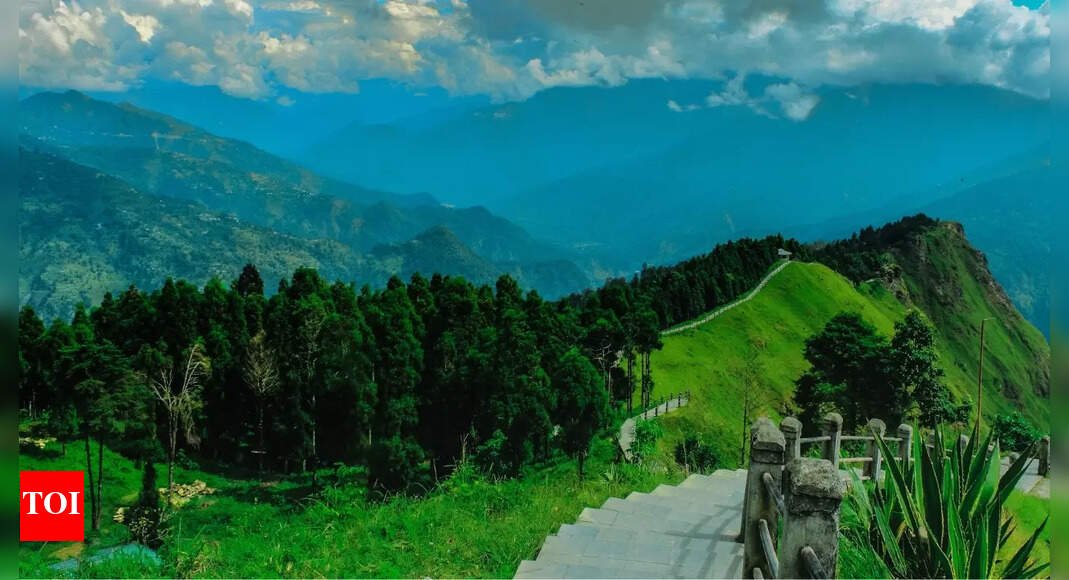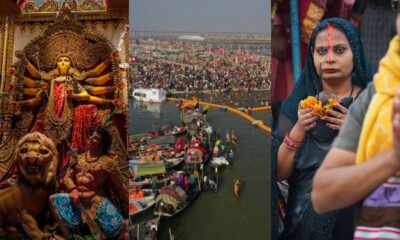Travel Guides & Articles
Exploring India: What You Need to Know Before You Travel

I’ve just returned from India — and honestly, I’m still processing everything I saw, tasted, felt, and learned. It’s not just a country; it’s an experience. And no matter how many countries you’ve visited (in my case, dozens), India has a way of humbling you, surprising you, and completely reshaping your idea of travel.
Whether you’re visiting for spiritual reasons, nature, food, history, or business — India doesn’t just offer one kind of experience. It offers a thousand kinds, all happening at once.
Before I dive into the places I explored and the things I learned, let’s start with how I got there — including the visa process, which I sorted smoothly through Regal Tours while based in Dubai.
Getting an India Visa from Dubai: My Experience
Applying for an India visa from the UAE is relatively straightforward, but I still didn’t want to deal with embassy appointments or missing documents. So, like I’ve done for a few of my other trips, I reached out to Regal Tours in Dubai.
They handled everything — explained the paperwork, checked my documents, and submitted my visa request. A few days later, I had my India tourist visa sorted, with no delays or last-minute surprises.
If you’re traveling from the UAE, make sure you have:
- A valid passport (at least 6 months remaining)
- A UAE residency visa
- Passport-sized photos (India has specific requirements, so double-check)
- Travel itinerary or hotel bookings
- Visa application form and processing fees
Some nationalities are eligible for e-Visa, while others require a stamped visa — your situation might vary, but getting help from someone experienced really makes the difference.
First Impressions of India
My trip started in New Delhi, and I’ll be honest — it’s a shock to the senses. The sound, color, chaos, traffic, food smells, and sheer number of people hit you all at once. But once you adjust, you realize there’s rhythm in the madness, beauty in the detail, and a kind of organized chaos that somehow works.
After Delhi, I made stops in Agra, Jaipur, Varanasi, and then down south to Kerala and Goa. Every place felt like a new country entirely. Different languages, foods, climates, and even customs — all within one border.
Where to Go in India: Highlights from My Trip
1. Delhi – The Historic Capital
From the Red Fort to Humayun’s Tomb, Delhi is rich with Mughal history. I loved walking around Old Delhi, tasting street food, and visiting India Gate at sunset.
2. Agra – Home of the Taj Mahal
Yes, it’s touristy — but there’s a reason for it. Seeing the Taj Mahal in person, especially at sunrise, is something you’ll never forget. Pictures don’t do it justice.
3. Part of the famous Golden Triangle,
Jaipur blew me away with its architecture. Amber Fort, Hawa Mahal, and the local bazaars make it perfect for photography and culture lovers.
4. Varanasi – The Spiritual Center
This is one of the oldest living cities in the world. Watching the Ganga Aarti at night on the ghats (steps leading to the river) is powerful and humbling. It’s chaotic but deeply spiritual.
5. Kerala – Backwaters and Greenery
A huge contrast to the north — Kerala is calm, lush, and laid-back. I stayed on a houseboat in Alleppey, and it was one of the most peaceful travel days I’ve had in years.
6. Goa – Beaches and Relaxation
If you need a break from the temples and traffic, Goa is your spot. Chill on the beach, try seafood, or rent a scooter and explore the coastline.
What You Need to Know Before Traveling to India
1. Pack for Variety
India is huge and diverse — so you’ll need different clothes depending on where and when you go. Northern winters can be cold, while the south stays tropical year-round. Layers are your friend.
2. Respect Local Culture
Dress modestly, especially at temples and holy sites. Always remove shoes before entering someone’s home or place of worship. A little cultural awareness goes a long way.
3. Food is Incredible – and Spicy
From butter chicken and biryani to dosas and chutneys, Indian cuisine is wildly flavorful. But it can also be a shock to the stomach. Start slow, drink bottled water, and avoid raw street foods until your system adjusts.
4. Transport Can Be an Adventure
Taxis, rickshaws, and local trains are cheap but not always predictable. Apps like Ola and Uber work well in cities. For longer trips, trains and domestic flights are efficient and affordable — just book in advance.
5. India is Safe — with Common Sense
As a solo traveler, I never felt unsafe, but I always stayed alert. Avoid walking alone at night in unfamiliar areas, don’t flash valuables, and be cautious when using ATMs. Most locals are helpful and friendly.
6. Internet and SIM Cards
Mobile data is cheap and widely available. You can get a local SIM at the airport or with your passport ID. Wi-Fi is available in most hotels and cafes, but mobile data is more reliable.
Travelling through India isn’t always easy — it’s intense, unpredictable, and sometimes frustrating. But it’s also beautiful, generous, spiritual, and deeply enriching.
Every time I thought I had figured India out, it surprised me again. Whether you’re drawn to its history, spirituality, natural beauty, or food — it leaves a lasting impression. It’s not just about seeing monuments. It’s about meeting people, listening to languages you don’t understand, sitting quietly by a river, and realizing how big and diverse the world really is.
If you’re in Dubai or anywhere in the UAE and planning a visit, I’d genuinely suggest getting your India visa through Regal Tours — not as an ad, but because having someone handle the bureaucracy lets you focus on planning the journey.
India is not a trip. It’s an experience, and one that stays with you long after you return.
Travel Guides & Articles
India’s TBO to acquire Classic Vacations

India based travel distribution platform TBO has agreed to acquire Classic Vacations from Phoenix-based investment firm, The Najafi Companies.
The transaction value is estimated at up to $125 million.
The acquisition brings together TBO’s technology platform and worldwide inventory with Classic Vacations network of luxury travel advisors and suppliers.
Classic Vacations delivered revenue of $111 million and an operating EBITDA of $11.2 million in the fiscal year ended December 31, 2024.
“We’re thrilled to bring Classic Vacations into the TBO family – the company’s longstanding delivery of outstanding services has earned the trust of its more than 10,000 travel advisors in the U.S,” said Gaurav Bhatnagar, TBO’s co-founder and joint managing director.
“Classic Vacations is led by a strong team of experts and will continue as an independent brand.”
“As we start working on integrating Classic Vacations with TBO, we will remain open to similar strategic alliances going forward,” added Ankush Nijhawan, co-founder and co-managing director.
Melissa Krueger, CEO of Classic Vacations, added: “Together, we’re strengthening Classic Vacations’ position as the premier luxury partner in the market while extending our reach onto the global stage.”
Classic Vacations was bought by The Najafi Companies in 2021 from Expedia Group.
Classic Vacations has a large network of high-value travel advisors and deep ties with major American consortia.
It delivers premium service across hotels, air, experiences, car rentals, and travel protection, specializing in bespoke luxury itineraries.
Related News Stories: Partner News – TravelMole
Travel Guides & Articles
Govt allows select minorities to stay in India without passport

The Union Home Ministry on Monday, September 1, issued an order announcing that the government now exempts minority communities, namely, Hindu, Sikh, Buddhist, Jain, Parsi and Christian fleeing religious persecution from Afghanistan, Bangladesh, and Pakistan, who entered the country by December 31, 2024, without requiring valid passports or travel documents.
“A person belonging to a minority community in Afghanistan, Bangladesh and Pakistan, namely, Hindu, Sikh, Buddhist, Jain, Parsi and Christian, who was compelled to seek shelter in India due to religious persecution or fear of religious persecution and entered into India on or before the 31st December, 2024,” read the order from the home ministry.
Interestingly, the order did not name Muslims. This is in line with the BJP-led government’s Citizenship Amendment Act (CAA) that was passed in 2019 to facilitate this. It had le to severe protests from Muslims and other citizens who said the law is discriminatory in nature and that it can also be misused to disenfranchise Muslims in the country.
In fact, over the last few months the central government and BJP-led state governments have been targeting Indian Muslims from West Bengal who were being picked up on false allegations of being Bangladeshi citizens. Several prominent activists including Umar Khalid and Sharjeel Imam are currently in jail having spent nearly five years in prison on charges of inciting riots in Delhi amid the anti-CAA protests.
It was issued as part of a series of directives made public by the Union Home Ministry, under the newly enacted Immigration and Foreigners Act, 2025, which came into effect on Monday, September 1.
The Immigration and Foreigners Bill, 2025, aims to grant the Union government the power to control the entry and exit of individuals into and from India by regulations that outline requirements for travel documents, such as passports, and govern various aspects of foreign nationals’ stay, including visa rules, registration procedures, and other related matters.
Previously, the Citizenship Amendment Act (CAA), which was enforced last year, extended the eligibility for citizenship only to non-Muslim minorities from Afghanistan, Bangladesh, and Pakistan who entered India on or before December 31, 2014.
While the recent directive allows certain individuals to stay in India without documentation if they arrived by December 31, 2024, it doesn’t guarantee citizenship.
In contrast, the 2019 Citizenship Amendment Act offers a path to citizenship for persecuted non-Muslim minorities from Pakistan, Afghanistan, and Bangladesh who entered India before December 2014.
The CAA’s exclusion of Muslims sparked widespread protests and concerns about discrimination, secularism, and potential disenfranchisement.
Travel Guides & Articles
Greenest destinations in India for eco-conscious travellers |

India is a haven for eco-conscious travelers seeking sustainable travel experiences. From lush rainforests to pristine Himalayan valleys, these are the places where natural beauty and responsible tourism go hand in hand. Here is a list of India’s greenest escapes, ideal for travelers who wish to explore and make the most of the outdoors while minimizing their environmental impact.
Mawlynnong, Meghalaya
Known as Asia’s Cleanest Village, Mawlynnong in Meghalaya is a model of sustainable living. Look around you and you will find bamboo dustbins. People do not litter here and they expect the tourists also to respect the village’s ways and not litter. Plastic is banned here. Take out time to explore the living root bridges, and interact with the local community. There are eco-lodges and homestays where visitors can stay, these stays offer authentic experiences.
Thenmala, Kerala
This is India’s first planned eco-tourism destination, Thenmala in Kerala’s Western Ghats offers a sustainable escape amidst evergreen forests. Also known as “Honey Hill,” it features attractions like the Thenmala Dam, Butterfly Safari Park, and Shenduruney Wildlife Sanctuary. For those interested, there are activities like boating, trekking, and rock climbing.
Sikkim
The entire state of Sikkim is a beacon of eco-tourism. Sikkim is recognized for its organic farming and conservation efforts. No wonder, it is also India’s first fully organic state. Sikkim is home to the Khangchendzonga National Park, a UNESCO World Heritage Site, which also boasts diverse flora and fauna, including red pandas and snow leopards. There is no dearth of eco-friendly guesthouses, responsible trekking opportunities, and cultural immersion with Lepcha and Bhutia communities. And last but not least, Sikkim is very clean, thanks to the eco-conscious communities.
Munnar, Kerala
Munnar in Kerala’s Western Ghats, is known for its tea plantations, lush valleys, and biodiversity. It is where you will find the rare Neelakurinji flower and species like the Nilgiri Tahr. Munnar is a great place for those seeking romantic getaways, but it is equally perfect for those seeking adventure activities like trekking and wildlife watching. Eco-resorts and sustainable practices, like waste management and local sourcing, ensure a low environmental footprint.
Spiti Valley, Himachal Pradesh
Monsoon may not be the right time to visit Spiti Valley, but come drier months, Spiti is one of the best in the country. This cold desert in the Himalayas, balances tourism with ecological preservation. Solar-powered homestays and community-based tourism initiatives support local livelihoods while protecting the fragile ecosystem. Travelers can explore ancient monasteries, trek through rugged terrains, and engage with sustainable practices, making Spiti a unique eco-destination. Here, it’s all about green energy and sustainable practices, because the greenery that comes with nature is a bit rare here, thanks to it being a cold desert.
-

 Business5 days ago
Business5 days agoThe Guardian view on Trump and the Fed: independence is no substitute for accountability | Editorial
-
Tools & Platforms3 weeks ago
Building Trust in Military AI Starts with Opening the Black Box – War on the Rocks
-

 Ethics & Policy1 month ago
Ethics & Policy1 month agoSDAIA Supports Saudi Arabia’s Leadership in Shaping Global AI Ethics, Policy, and Research – وكالة الأنباء السعودية
-

 Events & Conferences4 months ago
Events & Conferences4 months agoJourney to 1000 models: Scaling Instagram’s recommendation system
-

 Jobs & Careers2 months ago
Jobs & Careers2 months agoMumbai-based Perplexity Alternative Has 60k+ Users Without Funding
-

 Education2 months ago
Education2 months agoVEX Robotics launches AI-powered classroom robotics system
-

 Funding & Business2 months ago
Funding & Business2 months agoKayak and Expedia race to build AI travel agents that turn social posts into itineraries
-

 Podcasts & Talks2 months ago
Podcasts & Talks2 months agoHappy 4th of July! 🎆 Made with Veo 3 in Gemini
-

 Podcasts & Talks2 months ago
Podcasts & Talks2 months agoOpenAI 🤝 @teamganassi
-

 Education2 months ago
Education2 months agoAERDF highlights the latest PreK-12 discoveries and inventions





















